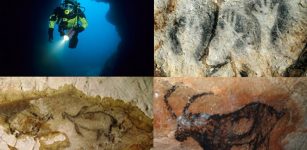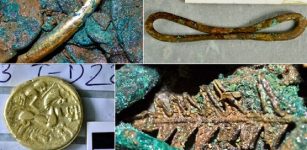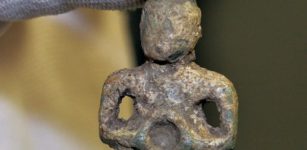North America’s New Snake Species Deepen Our Understanding Of Reptile Social Behavior And Development
Eddie Gonzales Jr. – AncientPages.com – A new species of fossil snake unearthed in Wyoming is rewriting our understanding of snake evolution.
The fossilized skeleton of the newly discovered snake species Hibernophis breithaupti, which lived 38 million years ago in what is now western Wyoming, reveals insights into the evolution and social behaviour of its modern descendants. (Photo: Jasmine Croghan)
The discovery, based on four remarkably well-preserved specimens found curled together in a burrow, reveals a new species named Hibernophis breithaupti.
This snake lived in North America 34 million years ago and sheds light on the origin and diversification of boas and pythons.
Hibernophis breithaupti has unique anatomical features, in part because the specimens are articulated — meaning they were found all in one piece with the bones still arranged in the proper order — which is unusual for fossil snakes.
The discovery of four ancient snakes in a cluster suggests they may have behaved like modern garter snakes, grouping together for protection during colder months. (Photo: Greg Schechter via Wikimedia Commons, CC BY 2.0)
Researchers believe it may be an early member of Booidea, a group that includes modern boas and pythons.
Modern boas are widespread in the Americas, but their early evolution is not well understood. These new and very complete fossils add important new information, in particular, on the evolution of small, burrowing boas known as rubber boas.
Traditionally, there has been much debate on the evolution of small burrowing boas. Hibernophis breithaupti shows that northern and more central parts of North America might have been a key hub for their development.
The discovery of the new snake species has yielded insights into the evolution of modern snakes like the Amazon tree boa (Ieft) and scrub python (right). (Photos: Michael Lee, Flinders University/South Australian Museum)
The discovery of these snakes curled together also hints at the oldest potential evidence for a behavior familiar to us today — hibernation in groups.
“Modern garter snakes are famous for gathering by the thousands to hibernate together in dens and burrows,” says Michael Caldwell, a U of A paleontologist who co-led the research along with his former graduate student Jasmine Croghan, and collaborators from Australia and Brazil.
“They do this to conserve heat through the effect created by the ball of hibernating animals. It’s fascinating to see possible evidence of such social behavior or hibernation dating back 34 million years.”
Paper:
Jasmine A Croghan, Alessandro Palci, Silvio Onary, Michael S Y Lee, Michael W Caldwell. Morphology and systematics of a new fossil snake from the early Rupelian (Oligocene) White River Formation, Wyoming. Zoological Journal of the Linnean Society, 2024; DOI: 10.1093/zoolinnean/zlae073
Written by Eddie Gonzales Jr. – AncientPages.com - MessageToEagle.com Staff Writer























